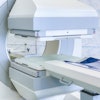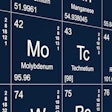ST. LOUIS - Cancer specialists are inclined to alter their patients' treatment protocols when armed with the information that FDG-PET provides, even ruling out surgery in many cases. A prospective evaluation of the role of whole-body FDG-PET for cancer management has yielded favorable initial results, according to a California researcher.
Dr. Marc Seltzer, from the Ahmanson Biological Imaging Clinic at the University of California, Los Angeles, shared his group's results in a presentation at the Society of Nuclear Medicine meeting on June 6.
"FDG-PET is gaining acceptance in the medical community," Seltzer said. "While the benefits of FDG-PET can be inferred from existing data, the impact of PET on the routine management of patients hasn't been well investigated in large numbers. We wanted to look at the impact of FDG-PET from the referring physician's perspective."
Between November 1998 and December 1999, 1,532 questionnaires were faxed to clinicians at UCLA, as well as to referring physicians who work with the Northern California PET Imaging Center in Sacramento. The two-part questionnaire asked whether 18F fluorodeoxyglucose PET had ever altered clinical decision-making.
"Basically, we had a pre-PET (imaging) section and a post-PET section," Seltzer explained. "We asked two basic questions on the pre-PET section: 'How would they have managed their patient without the knowledge of the PET findings?' and 'Why was the whole body PET scan ordered?'" The post-PET portion judged whether the PET results had brought about any revision in case management.
A majority of the patients had lung cancer (51%); other diseases included lymphoma, colorectal, and breast cancer. To date, the response rate has been approximately 35%.
Of those 538 who returned the questionnaire, 70% were medical oncologists and surgeons. The remainder of the group consisted of radiation oncologists, pulmonary specialists, and primary care physicians, Seltzer said.
Changes in patient management were rated in two ways: major if therapy switched from one modality to another, such as medical to surgical, surgical to radiation, or medical to no treatment; minor if changes were made within a modality, including altered medical, surgical, or radiotherapy treatment.
An FDG-PET exam resulted in a major change in patient management in 43% of the cases, a minor change in 17%, and no change in 35% (5% of the survey takers did not respond to this specific question), Seltzer said. The majority of changes occurred in patients with lung cancer, with doctors revamping the treatment plan in 44% of the cases after FDG-PET.
In terms of clinical staging, the FDG-PET results convinced physicians to upstage disease estimates in 28% cases and downstage in 14%.
Overall, FDG-PET led to a shift away from surgery or radiation therapy in 17% of the patients. Conversely, referring physicians decided on surgery or radiotherapy in 14% of the cases, based on the test results.
More than half of the respondents, 63%, said FDG-PET was ordered in order to provide more accurate staging for a cancer. FDG-PET also was used by 37% of the respondents for a more detailed diagnosis, as well as to monitor the course of the disease and its therapy.
A group from Vanderbilt University in Nashville, TN, found that FDG-PET, when combined with CT, can alter the management of patients with pancreatic cancer because of its ability to clarify "indeterminate hepatic lesions or identify additional distant metastases" (J Nucl Med, Nov. 1999, Vol. 40:11, pp.1784-1791).
And associates at the Northern California PET Imaging Center determined that the preoperative detection of non-resectable tumor by PET could avoid unnecessary surgery (Arch Surg, May 1999, Vol. 134:5, pp.503-511).
Seltzer acknowledged that a 35% response rate was fairly low, and attributed it to the fact that the questionnaire was only faxed once to the potential respondents. One bias of the study is that physicians who were already inclined to PET imaging took the time to fill out the survey, he added.
Still, even in those cases where the FDG-PET results did not inspire a change in management, or a shift in clinical staging, referring physicians did say that it offered new information about the course of the cancer, Seltzer said.
"In some patients, the FDG-PET changed the extent of the disease, detecting more metastatic lesions. PET also confirmed what was previously suspected, but not confirmed (earlier), with another modality."
By Shalmali Pal
AuntMinnie.com staff writer
June 7, 2000
Let AuntMinnie.com know what you think about this story.
Copyright © 2000 AuntMinnie.com


















